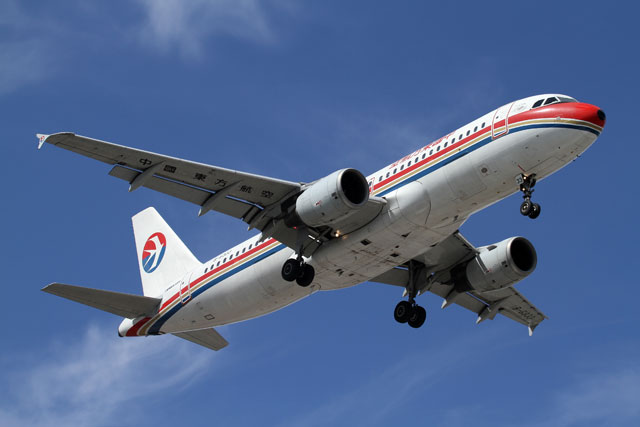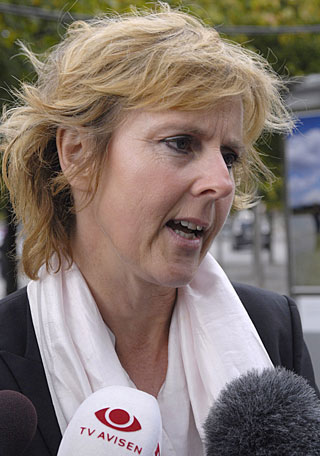Despite increasing pressure from other countries, the EU has always been staunch in its defence of the inclusion of aviation in its emissions trading scheme (ETS). Then suddenly in November, it announced that it was "stopping the clock" on the scheme as a gesture of goodwill to allow the International Civil Aviation Organisation (ICAO) to make progress on a global scheme.
So what prompted this change of heart and what does it mean for the sector?
As long ago as 2006, the European Union proposed including aviation in the ETS and the plan was approved in 2008.
The EU moved because greenhouse gas emissions from the aviation sector are growing rapidly - at a time when emissions from many other sectors are falling. "The increase in emissions from aviation threatens to wipe out the gains in other industries," says Tim Baines, a lawyer in the clean energy and climate change team at Norton Rose.
 |
|---|
AirTeamImages.com China Eastern Airlines ordered 60 Airbus aircraft after the EU froze its ETS scheme |
By 2020, international aviation emissions, which currently account for 2-3% of global emissions, are projected to be around 70% higher than in 2005, even if fuel efficiency improves by 2% per year, says the European Commission. ICAO forecasts that by 2050 emissions could grow by a further 300-700%.
There is widespread agreement that the industry's emissions need to be tackled. But aviation was never included in the Kyoto Protocol - instead it was left to ICAO, the UN body that governs aviation, to come up with a global scheme to cut the impact of flying. And even the EU says that the best way to do this is through a worldwide agreement, given the global nature of aviation and the fact that most of the industry's emissions come from international flights. "The EU has always been very clear: nobody wants an international framework tackling CO2 emissions from aviation more than we do," says Connie Hedegaard, EU Commissioner for Climate Action.
However, Brussels proposed its own unilateral scheme because it thought ICAO was failing to act quickly enough. "The EU's decision to include aviation in the EU ETS was taken after ICAO explicitly decided in 2004 not to pursue a global instrument of its own," Mary Veronica Tovsak Pleterski, director for European and international carbon markets in the Commission's climate action unit, told Flight International earlier this year.
It took the EU several years to complete the process of bringing aviation into the ETS, during which time ICAO appeared to make little or no progress on a global scheme, leading many in Europe to feel that the EU was justified in its actions.
 |
|---|
"Finally we have a chance to get an international regulation on emissions from aviation" Connie Hedegaard |
"The legislation has been around for a long time and the aviation industry did not take an active involvement," says Baines. "Everyone thought it would die away. It was only when they had to fill in monitoring plans that it rocketed up the agenda."
As the deadline for the legislation to take effect on 1 January 2012 approached, opposition from airlines and governments became more virulent. The Air Transport Association of America, now known as Airlines for America (A4A), supported by the International Air Transport Association (IATA) and the National Airlines Council of Canada (NACC), took the EU to the European Court of Justice, claiming that the scheme was a violation of sovereignty and that it would cost airlines millions of dollars.
NEW BATTLEGROUNDS
However, the ECJ declared that the EU plan was lawful and so the battle moved to other arenas. In the USA, Congress moved to ban US airlines from complying with the scheme - a move that President Obama recently signed in to law, to the disappointment and bemusement of the EU ,given that it had just announced its "stop the clock" measure.
As well as the USA, 23 countries including China, India, Russia and Saudi Arabia said that the scheme violated their sovereignty, and at a meeting in Moscow in February, they agreed to co-ordinate any retaliatory action against European airlines. Russia, for example, said it might withdraw permission for European airlines to fly over Siberia. There was also a suggestion that other countries might follow the USA in creating national laws banning their airlines from complying with the EU measure.
Both China and India missed a deadline to file data related to the scheme, while India was threatening to make the inclusion of aviation in the ETS an issue at this year's climate talks in Doha.
More seriously given Europe's perilous economic situation, airlines in China started to delay the purchase of aircraft from Airbus, freezing orders worth some $14 billion. Germany's aerospace policy co-ordinator Peter Hintze highlighted the fears of many in the European aerospace market at the Berlin Air Show in September. "We feel we are being discriminated against," he said. "We demand a global solution from an industrial policy point of view because we could otherwise put ourselves at a disadvantage in major markets."
Nonetheless, there seemed little prospect of the EU changing its stance. Bolstered by the ECJ decision, it appeared to be convinced of the strength of its case. Jos Delbeke, the Commission's director general for climate action, for example, said that "the European Commission has a constitutional obligation to enforce the law, and will do so".
ICAO DECISIONS
Then in October, Hedegaard signalled that a forthcoming ICAO Council meeting could herald a breakthrough, telling Reuters: "We think that there is a will on the part of the leadership of ICAO, paving the way for substantial decisions to be taken at next year's ICAO general assembly."
And indeed, on 12 November, Hedegaard said that progress at ICAO meant that "finally, we have a chance to get an international regulation on emissions from aviation. In order to create a positive atmosphere around these negotiations, I've just recommended that the EU 'stops the clock' when it comes to enforcement of the inclusion of aviation in the EU ETS to and from non-European countries until after the ICAO general assembly next autumn".
According to Hedegaard, the reason for the EU's action is that the ICAO Council meeting in November agreed, among other things, that: a high-level policy group will be set up shortly; options for a regulatory MBM (market-based mechanism) will have to be reduced from three to one; and there is an explicit reference to the global MBM that the world now needs to agree on.
But many observers suggest that there is nothing particularly significant about the ICAO move, and that it does not justify Hedegaard's conviction that "a global solution for addressing the fast-growing emissions from international aviation is within reach at the upcoming ICAO assembly in 2013".
Andreas Arvanitakis, director of advisory services at Thomson Reuters Point Carbon says that "nothing out of the ordinary happened at the most recent ICAO meeting. It was just a hook to hang the announcement on".
Nor is progress on a global scheme likely to accelerate, he suggests. "ICAO cannot just click its fingers and make this happen - and it is the very countries that complained most about the ETS that have been dragging their feet in ICAO. It's completely cynical."
The move came as a surprise, according to lawyers at Reed Smith, "because no alternative scheme has yet been agreed by ICAO or its members, and certainly no alternative scheme is going to be in place for a few years yet". It certainly upset environmental groups, who said the EU move took the pressure off ICAO to act and was an overreaction to some vague undertakings by ICAO.
"The EU has made a bigger gesture than was necessary by stopping its clock for one year, but there is no longer any excuse for inaction, and we hope ICAO's 'high-level group' will move quickly to develop a viable measure that is environmentally effective and addresses the concerns of developing nations," says Bill Hemmings, aviation manager at European pressure group Transport & Environment.
ROADBLOCK CLEARANCE
ICAO secretary general Raymond Benjamin says that "we welcome this initiative and want to collaborate on this", while IATA says that "the EU announcement clears the way for progress at ICAO. The EU scheme did focus minds and that was a good thing, but it went beyond that and became a roadblock".
And in China, the world's fastest-growing aviation market, China Eastern Airlines pointedly agreed a deal for 60 Airbus aircraft within a fortnight of the announcement, while China Southern signed up for 10 of the company's A330s days later.
 |
|---|
Rex Features Russia threatened to ban European airlines from flying over Siberia |
Meanwhile, Benjamin said: "We are not working under EU pressure. The EU is focusing on MBMs but that is only one focus of our work. Producing a global scheme by the next assembly is not realistic. What we have to do is answer whether it is feasible or not. We are 191 countries, not 27 [like the EU]. It is not easy to get agreement."
Given that the EU climate commissioner was unequivocal that the ETS process would restart "if this exercise does not deliver", it is unclear what will happen should the ICAO process fail to satisfy the EU. An optimistic observer would say that if ICAO fails to make progress by this time next year, the EU will be able to "restart the clock" with its legitimacy enhanced, having given the global body the space and time to act.
"The European Commission would say: 'We listened, we compromised - you have failed to do anything so we will go back to what we originally planned,'" said Baines.
The pessimistic view is that the EU has now effectively abandoned its unilateral efforts to cut emissions from aviation, not least since it has emerged that Hedegaard's announcement came in the face of strong pressure from the Airbus countries, particularly France. Arvanitakis says that "international aviation is out of the ETS. The EU has lost all its negotiating power. You can't stop the process but say 'I reserve the right to get really cross in a year's time'. It's not credible".
The threat is further diminished by the fact that US airlines are now prohibited by law from complying with the requirements of the ETS.
Ultimately, Hedegaard's question after the meeting of ETS opponents in Moscow earlier this year remains hanging in the air. "We know that you don't like it [the EU ETS], but what are your constructive proposals to reach a global agreement for the aviation sector?"
However, the suspicion remains that the EU has been forced into a climbdown that will put efforts to create a global scheme to tackle emissions from aviation back on the slow track.
Source: Flight International























